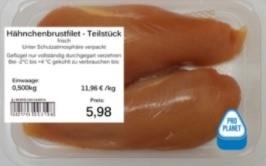By Kevin Laurent
There are many events or moments throughout the year that we as beef producers look forward to with great anticipation, excitement and frankly some degree of worry. It could be the daily checks during calving season or finding out your pay weight and price for a load of yearlings you delivered to the sale barn. I think most of us would agree that the annual preg checking of the cow herd is right there towards the top of the list of management activities that can have us on pins and needles. Open cows and open heifers are part of the business. What we choose to do with open females can affect our bottom line. For the sake of brevity, I would like to limit this discussion to replacement heifers and what options we have when the vet finds her empty.
Give her another chance or cull her? It may be tempting to give open heifers another chance especially if you have both a fall and spring calving season. The problem with this option is research shows that there may be upwards of 20% reduction in conception rates on heifers that failed to conceive in the first breeding season. Ask yourself, if she was a slow breeder as a yearling, what will her chances be of breeding back as a 2 year old? If we choose to cull her, what is the best way to market a 900-1100 lb open heifer?
Option 1: Sell at the sale barn. Obviously, the easiest option, but be prepared for a pretty severe discount mainly because there are simply not that many heifers of that weight class at the sale barn on any given day. Remember, the cattle market moves in load lots of 48-50,000 pounds. It may take order buyers several weeks to assemble 45-50 open heifers of that weight class to make a load.
Option 2: Feed them. Open replacement heifers are still of an acceptable age to be finished for slaughter. Most heifers at pregnancy check time are about 18 months of age and can be easily finished with 3-4 months of additional feeding. Local beef is in big demand and if slaughter space can be scheduled this may be an acceptable option.
Option 3: Retain ownership and send them to the feedlot. This is one option that most small to medium size cow calf producers have probably not considered. Recent data from the PVAP-Feedlot program on 18 open replacement heifers showed an average profit of $132 per head while feeder calves on the same load lost $98 per head. The primary reason for this difference is due to the discounted starting value of the open replacement heifers, however as you can see in the following table, the replacement heifers outgained and out graded the feeder calves.

There appears to be great potential for producers to pool open replacement heifers in late summer and send to the feedlot as opposed to selling at a discount. But there are some additional factors to consider.
Considerations for retaining ownership and finishing open replacement heifers:
- Be mindful of the age of heifers. Heifers that are skeletally mature may be downgraded to Commercial or Utility grade and severely discounted. Try not to feed heifers that are older than 20 months.
- Manage heifers much like feeder calves. Make sure to booster respiratory vaccines and deworm before shipping to the feedlot.
- If you choose to feed heifers on your farm and have never finished cattle, take advantage of upcoming Master Finishing programs that will be offered this fall.
Source : osu.edu